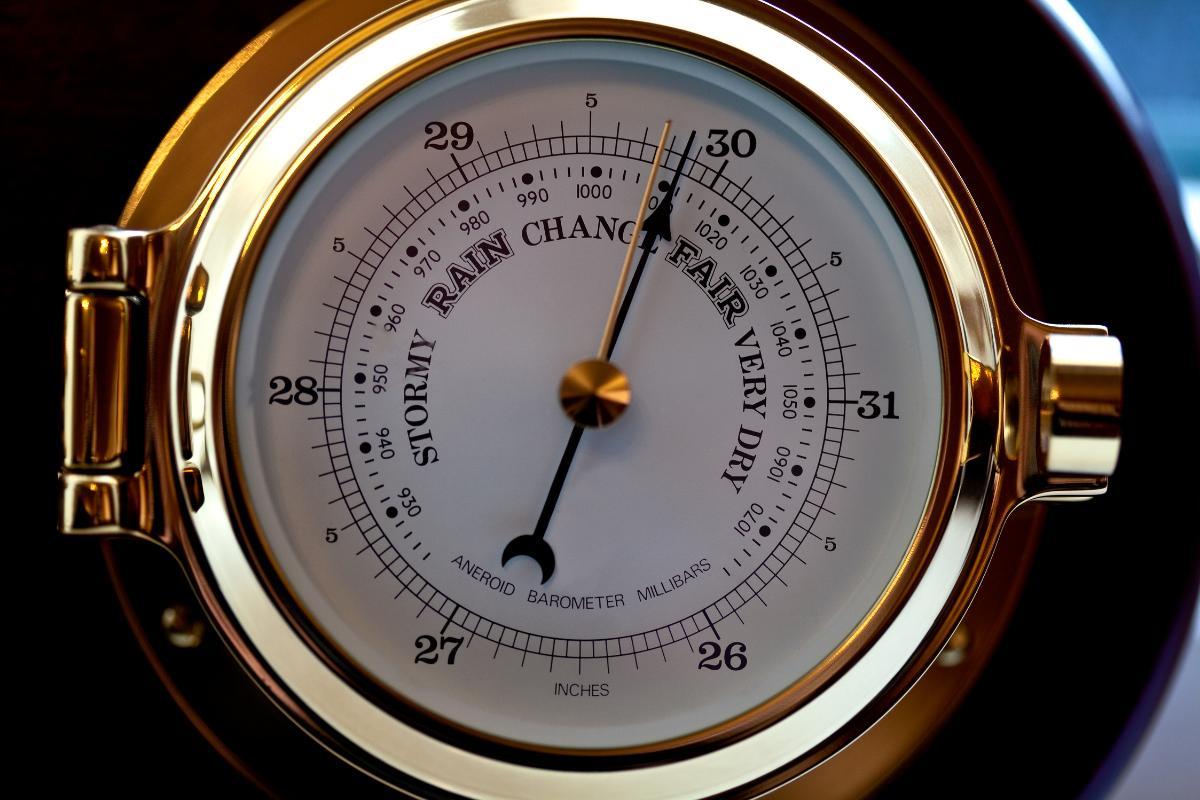How Do We Measure Atmospheric Pressure?


Atmospheric pressure, the force exerted by the weight of the air above us, plays a crucial role in weather patterns, aviation, and even our daily lives. Measuring this pressure helps scientists and meteorologists predict weather changes and understand atmospheric behavior. But how exactly is atmospheric pressure measured, and what instruments are used for this task?
This article by thedailyECO explores the different units, tools, and methods used to meassure atmospheric pressure, explaining their importance and how they contribute to our understanding of the environment around us.
What is atmospheric pressure?
Atmospheric pressure is the force exerted by the weight of air on the Earth's surface. Though we don’t typically feel it, we are constantly surrounded by a layer of gases, primarily nitrogen and oxygen, which make up the atmosphere.
The Earth's gravity pulls these gases toward its surface, creating pressure as the air molecules press down on everything in contact with them. This pressure affects weather patterns, altitude, and even how we breathe, though it's usually imperceptible in our daily lives. Not only that, but our bodies are adapted to the atmospheric pressure at sea level. Changes in pressure, such as those experienced during air travel or scuba diving, can affect our health.

In what units is atmospheric pressure measured?
Atmospheric pressure can be measured using several units, and the choice of unit often depends on the context or region:
- Hectopascals (hPa): this is the most widely used unit in meteorology. One hectopascal equals 100 pascals (Pa), which is the standard unit of pressure in the International System of Units (SI). Atmospheric pressure at sea level typically measures around 1013 hPa.
- Millimeters of mercury (mmHg): also known as torr, this unit originates from mercury barometers. In these instruments, atmospheric pressure pushes mercury up a column, and the height of the mercury column represents the pressure. At sea level, average atmospheric pressure is around 760 mmHg. This unit is still commonly used in medicine and older scientific contexts.
- Atmospheres (atm): although less common in everyday use, the atmosphere (atm) is a useful unit in physics and chemistry. One atmosphere represents the average pressure exerted by air at sea level, equivalent to approximately 1013 hPa or 760 mmHg.
- Bar: common in industrial applications, the bar is another unit of pressure. One bar equals 1000 hPa or 100,000 Pa, making it close to standard sea-level pressure. While not part of the SI, it’s frequently used in engineering and industrial contexts.
Did you know that certain air currents can transport vast amounts of water vapor? Discover how these phenomena shape our weather in another article.
How is atmospheric pressure measured?
Atmospheric pressure is measured using an instrument known as a barometer. While there are various types of barometers, they all serve the same purpose: to measure the force exerted by the air on the Earth's surface. Here are the main types of barometers:
Mercury barometer:
This traditional instrument consists of a glass tube closed at one end and filled with mercury. The open end is submerged in a container filled with mercury. When atmospheric pressure exerts force on the mercury in the container, it causes the mercury to rise or fall within the tube. The height of the mercury column, measured in millimeters of mercury (mmHg), indicates the atmospheric pressure.
Aneroid barometer:
Unlike the mercury barometer, the aneroid barometer does not use any liquid, making it more portable and convenient. It contains a sealed metal capsule with a partial vacuum inside. Changes in atmospheric pressure cause the capsule to either compress or expand, and this movement is translated into a pressure reading.
Digital barometers:
Modern advancements have led to the development of digital barometers, which utilize electronic sensors to measure atmospheric pressure. These sensors, known as pressure transducers, detect variations in air pressure and convert that data into a digital reading, providing a user-friendly display of atmospheric conditions.

How much can atmospheric pressure fluctuate?
Atmospheric pressure is not constant; it varies due to several factors:
- Altitude: atmospheric pressure decreases with increasing altitude. This occurs because there is less air above us at higher elevations, resulting in reduced weight and, consequently, lower pressure. At sea level, such as along coastal areas, pressure is higher because the air is more densely "stacked" above.
- Temperature: when air is heated, its molecules expand and become less dense, leading to a decrease in pressure. Warm air tends to rise, which means there is less air above the surface to exert pressure.
- Weather systems: variations in atmospheric pressure are crucial for understanding weather patterns. Meteorologists analyze high and low-pressure zones to make weather predictions, as these zones influence climate and atmospheric conditions.
- Effect of wind: air naturally moves from areas of high pressure to areas of low pressure, creating air currents. The greater the difference in pressure between two locations, the stronger the resulting winds, which can significantly affect weather and climate patterns.
Curious about what makes up the air we breathe? Discover more about the building blocks of our atmosphere in our latest piece.
What is the difference between stability and instability of the atmosphere?
Atmospheric stability and instability describe the behavior of air in terms of its tendency to remain in place or move vertically:
Atmospheric stability:
The atmosphere is deemed stable when the air tends to remain in position and does not easily rise. This stability occurs when the layers of air closest to the ground are either colder than or equal in temperature to the layers above. In stable conditions, vertical movement is limited, which can lead to clear skies and minimal cloud formation.
Atmospheric instability:
Conversely, the atmosphere is considered unstable when the air near the surface is significantly warmer than the air above it. In this scenario, the warm air, being less dense, rises rapidly. As it ascends, the air cools and may reach its condensation point, leading to the formation of clouds. If the instability is strong enough, these clouds can develop vertically, resulting in thunderstorms and other severe weather phenomena.

How does atmospheric pressure affect humans?
Atmospheric pressure significantly affects our lives in various physical ways and influences how we perceive our environment:
- Changes in blood pressure: some individuals, particularly those with hypertension or hypotension, may be sensitive to fluctuations in atmospheric pressure. These changes can impact their overall health and well-being.
- Headaches and migraines: variations in atmospheric pressure, especially during low-pressure systems associated with inclement weather, can trigger headaches or migraines in susceptible individuals.
- Joint pain: many people with arthritis or other joint conditions report heightened pain or stiffness when air pressure drops, as changes in pressure can affect joint sensitivity.
- Breathing problems: in high-altitude areas, where atmospheric pressure is lower, some individuals may experience difficulty breathing due to reduced oxygen availability.
- Altitude sickness: traveling to high altitudes, such as mountainous regions or elevated plateaus, results in significant decreases in atmospheric pressure, which can lead to altitude sickness—a condition characterized by symptoms such as headache, nausea, and fatigue due to reduced oxygen levels.
- Effects on flight and aviation: as an aircraft ascends to higher altitudes, atmospheric pressure decreases, impacting how humans breathe. To ensure passenger comfort and safety, airplane cabins are pressurized to maintain a stable pressure level, enabling a more comfortable flying experience.
Want to understand the forces behind global wind patterns? Check out our other exploration of atmospheric circulation.
If you want to read similar articles to How Do We Measure Atmospheric Pressure?, we recommend you visit our Environment (other) category.
- Jason Medina. Differences and characteristics between atmospheric pressures, barometric pressures, and absolute and relative pressures. SCRIBD. Available at: https://es.scribd.com/presentation/442453511/Diferencias-y-caracteristicas-entre-presiones-Atmosfericas-Barometricas
- Atmospheric pressure. Meanings. Available at: https://www.significados.com/presion-atmosferica/








